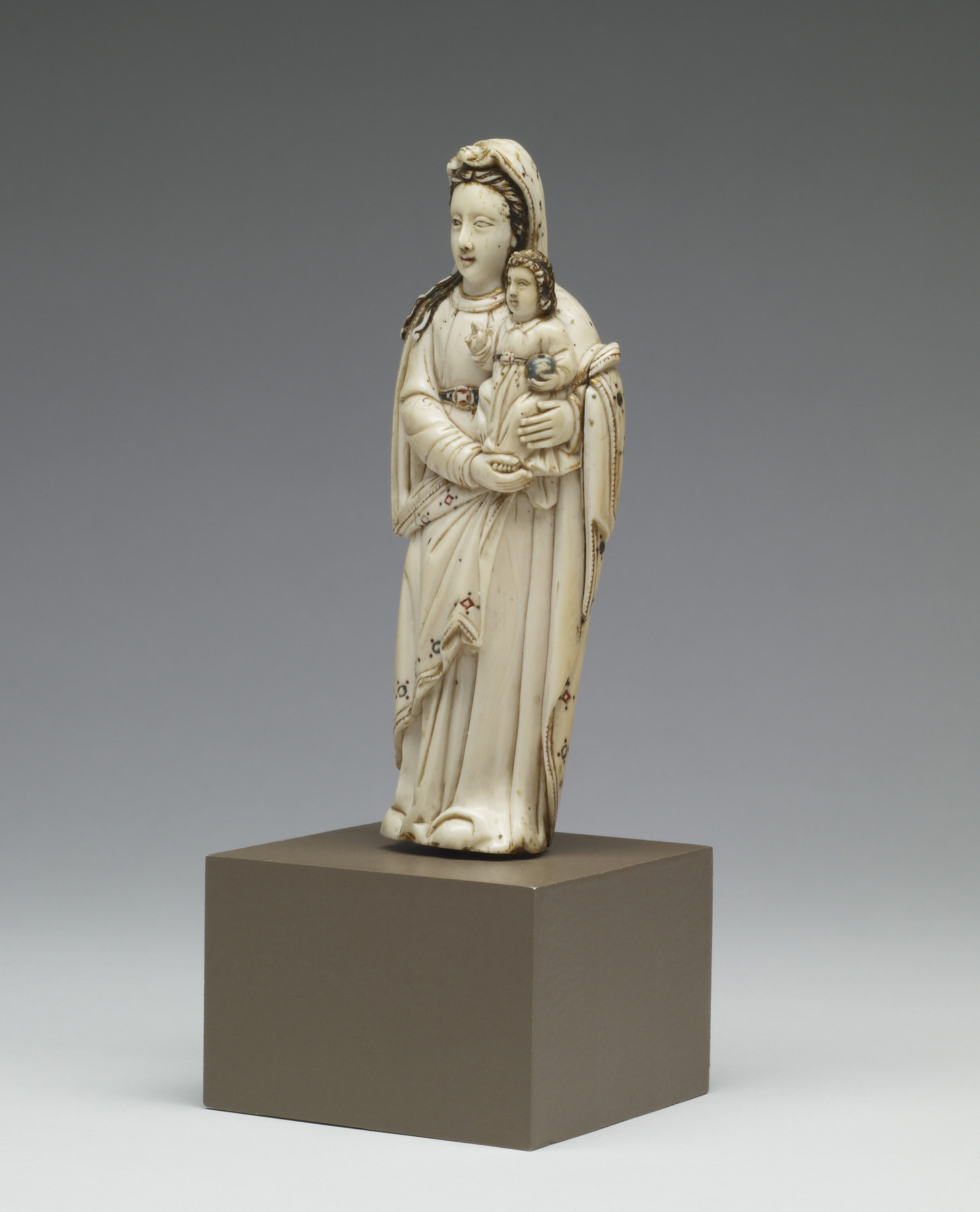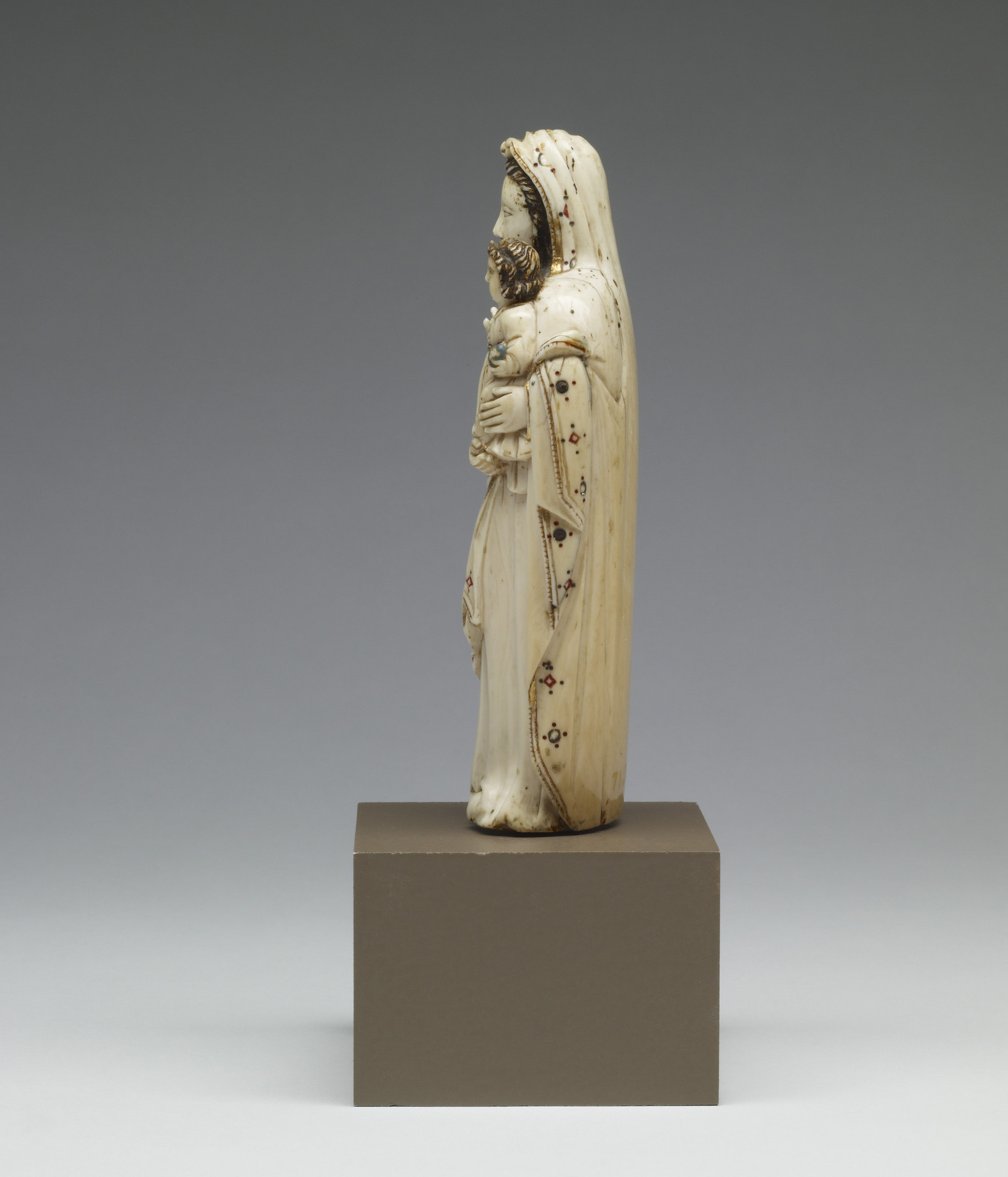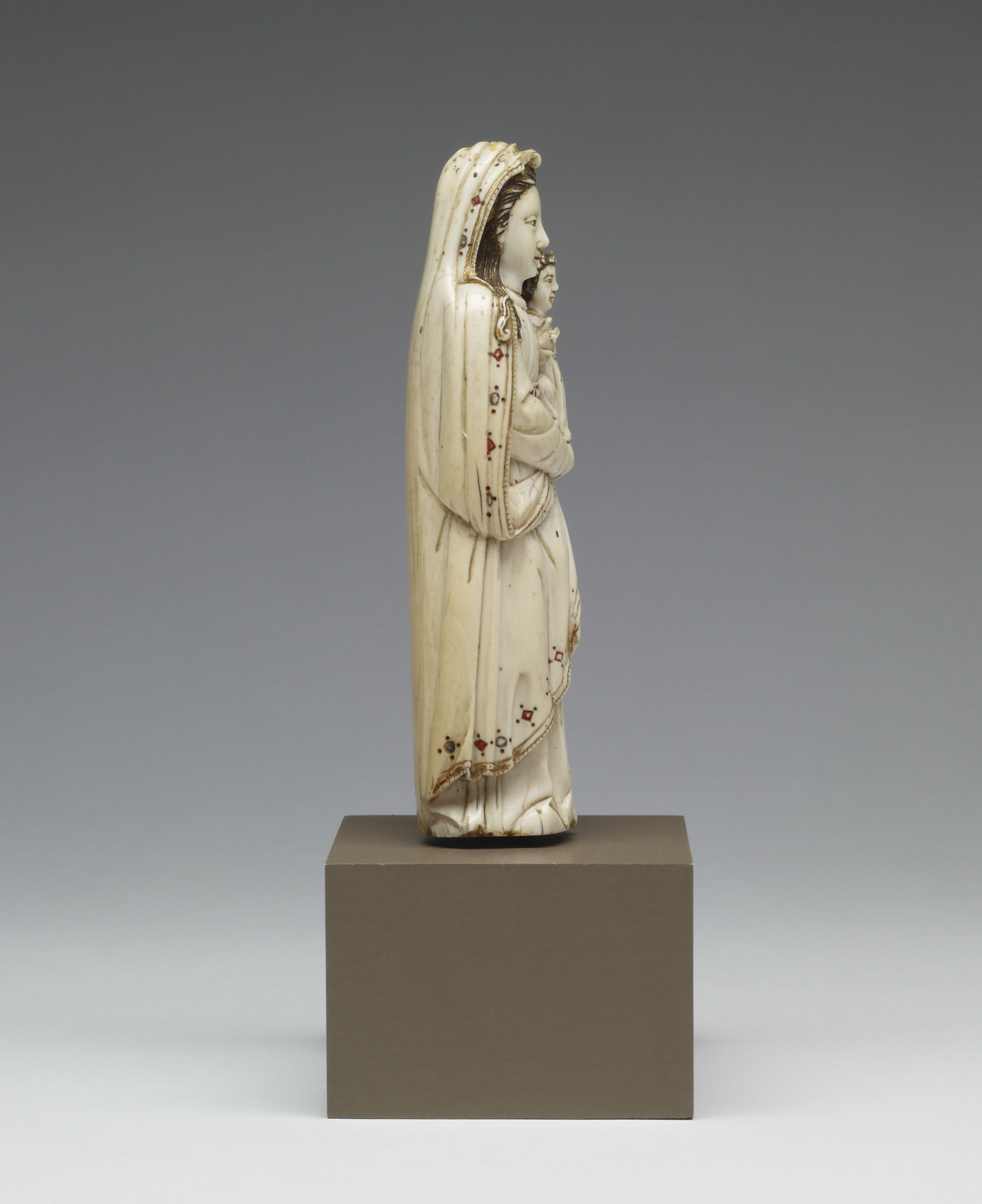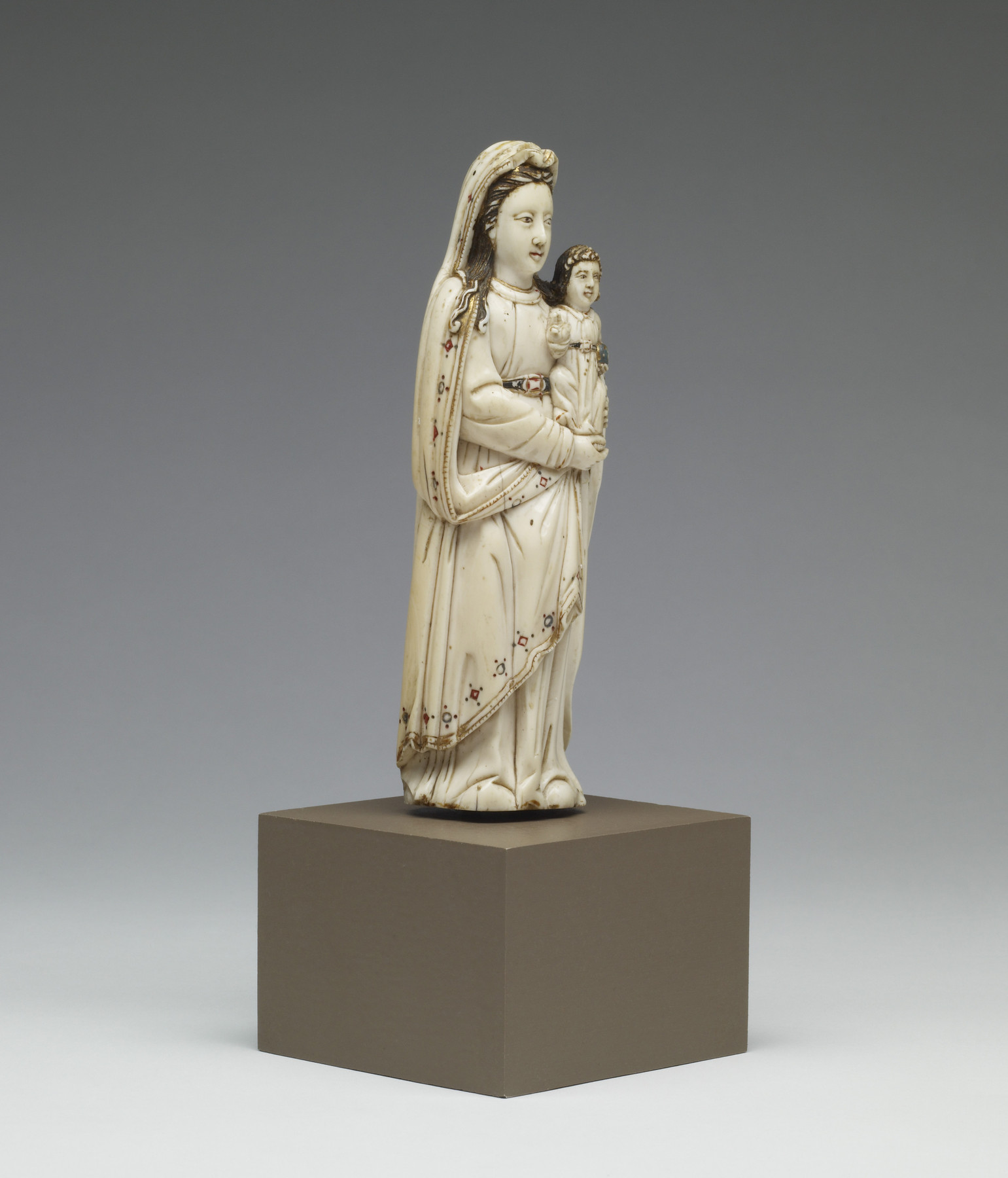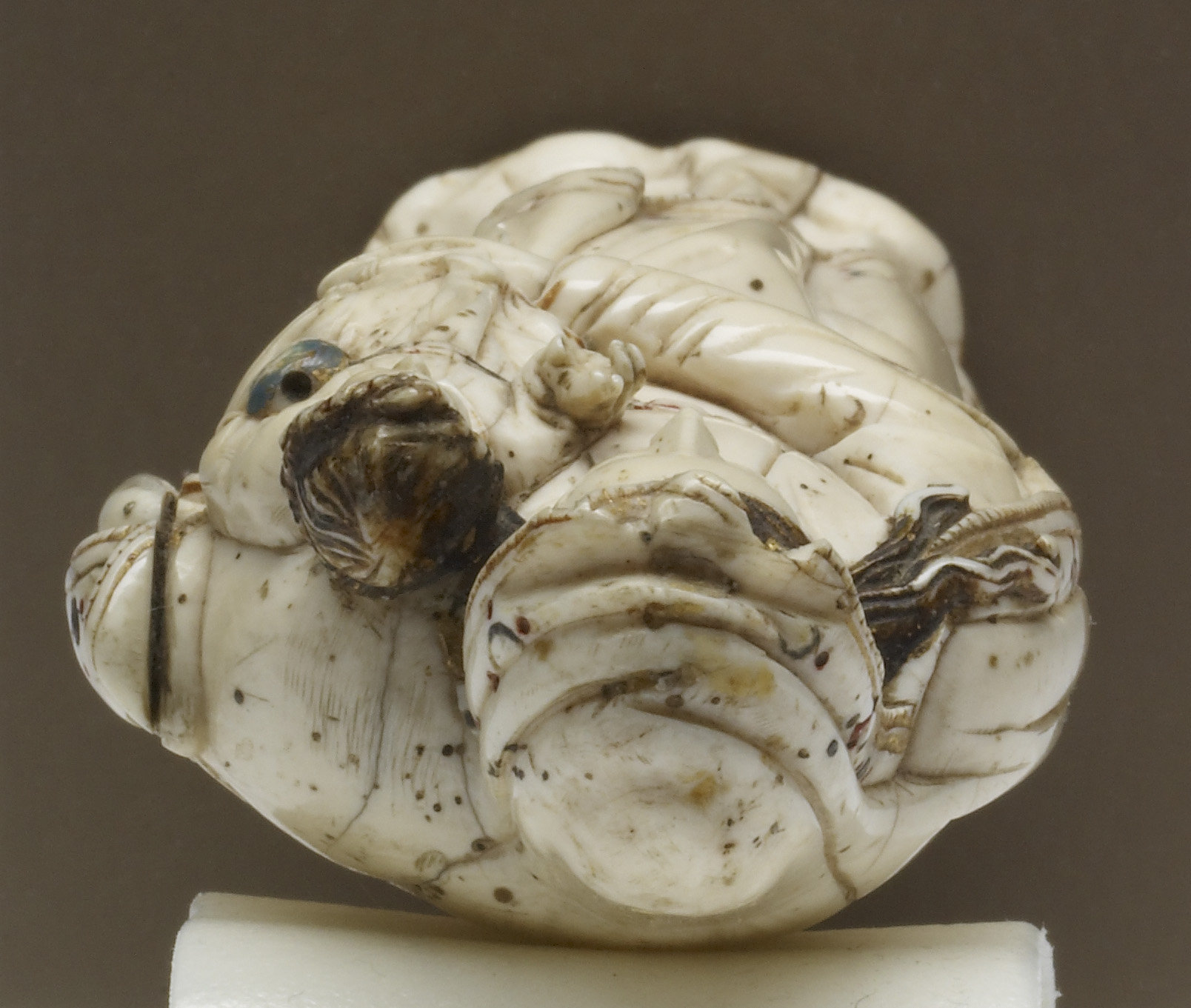Virgin and Child
(Baroque Europe )
The Virgin holds the Infant erect. Represented as Saviour of the World, he raises his right hand in blessing and holds an orb in his left. In pose and facial features, this statuette exhibits similarities to Chinese renderings of the deity Guanyin [Kuan Yin] (for which see Walters 71.656). There is no direct evidence of Chinese artisans producing Christian devotional objects in China, regardless of the efforts by the Jesuits to establish Christianity there. However, artisans within the Chinese merchant community in the Philippines were very active producing devotional works for Spain's world-wide network of colonies. The fall of the draperies more closely responds to a European sensibility. The figure can be compared and contrasted with Walters 71.322.
Bordering the hem of the Virgin's mantle is a double band of gold and a pattern of alternate lozenges and ovals, with dots colored blue and red. Both figures have black hair and similar belts in blue and red. The fold of drapery over the Virgin's left elbow has been carved separately and applied with two pins.
The base is drilled with two holes in which pegs would have been inserted to attach the statuette to a lower member, presumably a support of angels and clouds.
Provenance
Provenance (from the French provenir, 'to come from/forth') is the chronology of the ownership, custody, or location of a historical object. Learn more about provenance at the Walters.
Purchased by William T. or Henry Walters, Baltimore; by bequest to Walters Art Museum, 1931.
Geographies
Philippines (Place of Origin)
Measurements
H: 5 1/2 in. (14 cm)
Credit Line
Acquired by William T. or Henry Walters
Location in Museum
Not on view
Accession Number
In libraries, galleries, museums, and archives, an accession number is a unique identifier assigned to each object in the collection.
In libraries, galleries, museums, and archives, an accession number is a unique identifier assigned to each object in the collection.
71.358

